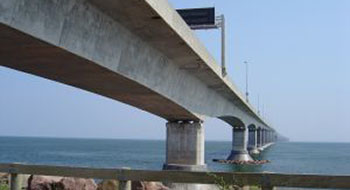

Earlier this month, the province of Ontario released its economic outlook and fiscal review. A key part of the outlook is to continue to build modern public infrastructure such as public transit, highways, hospitals and schools to support economic growth, prosperity and job creation.
Investment in infrastructure is not new to Ontario. In fact, since 2003, the government has invested more than $85 billion in roads, bridges, hospitals, schools, courthouses and the like. Some of this was repair work, but much was new structures delivered in many cases through a public-private partnership (PPP) approach. Pension plans, including many of my clients, and other investors have helped finance these initiatives with debt and/or equity and have earned a healthy return of 8% to 12% for the equity and 4% to 6% for the debt and will continue to do so for many years.
The three newer initiatives announced in the outlook were as follows:
- Ontario’s new Trillium Trust;
- green bonds; and
- pension plan investment in Ontario infrastructure.
The government plans to create the Trillium Trust where revenue gains from asset sales would be placed in a consolidated trust and used to finance key public infrastructure initiatives. Green bonds would be used to raise capital for projects with specific environmental benefits. The proceeds from green bonds would be invested in transit and other environmentally friendly infrastructure projects across the province. Finally, the province plans to relax rules limiting investment in more than 30% of the voting shares of a single corporation, which the government believes would make it easier for pension plans to finance larger infrastructure projects either alone or in combination.
In support of its initiatives, the government noted a number of statistics supporting job creation and economic growth. For example, in 2009, Statistics Canada reported that 50% of Canada’s growth in productivity between 1962 and 2006 resulted from public infrastructure. A 2013 Conference Board of Canada report cited that each $100 million of public infrastructure planned by Ontario between 2006 and 2014 boosts GDP by $114 million, particularly in the construction and manufacturing sectors.
It’s clear how these initiatives will help the economy, but how do they help pension plans? Asset sales have been used to help lower the outstanding debt of government in some cases and/or to finance costly infrastructure initiatives that the government could not otherwise afford. Assets such as ports, airports, waste treatment facilities, energy distribution networks and roads to institutional investors in the United Kingdom, Canada, Australia and Europe have been happily purchased by pension plans, either themselves or through infrastructure funds. The ongoing revenue from these assets is relatively stable and typically escalates with inflation, and is therefore attractive to investors with ongoing pension obligations. This predictability helps manage contribution variability for plan sponsors and, in some cases, has enabled plan sponsors to lower the overall investment risk profile of their portfolios.
The sale of assets by the province of Ontario has not been the norm to date. In fact, most PPP projects completed in Ontario have involved facility payments by the province for up to 30 years with the asset reverting to the province at the end of the contract. It will be interesting to see going forward which assets are financed through PPP and which are earmarked for outright sale.
While there have been initiatives in Ontario in the past to support green or renewable energy development such as the Feed-in Tariff Program, the Green Bond Program appears to have broader application than just energy. As our population matures, investors, both individuals and pension plans, seek stable, secure investments. Depending on the spread over federal and provincial government bonds and the term to maturity, these could be an attractive investment.
The final new initiative announced by Ontario is the relaxation of the 30% ownership rule, enabling pension plans to completely own the equity of a particular project without falling afoul of regulations. In truth, while this may serve as an additional source of funding for the government from the largest Ontario registered pension plans, most plans are too small to have ever breached the 30% rule.
Continued investment in infrastructure is welcome for all its benefits—economic and investment related. I know there are a number of pension plans that feel the same way and are eagerly awaiting future investment opportunities.
